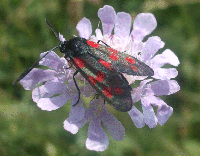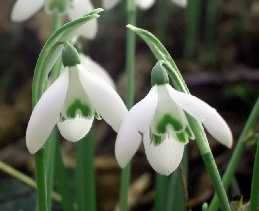|
This month look out for:
 Bird
flocks in wetlands and estuaries Bird
flocks in wetlands and estuaries
 Redwings,
fieldfares and waxwings Redwings,
fieldfares and waxwings
 Surprises
at the garden bird table Surprises
at the garden bird table
 Frogs
returning to ponds Frogs
returning to ponds
 Thrushes,
robins and great tits singing for territories Thrushes,
robins and great tits singing for territories
Christmas is over and the new year celebrations are now a mere
hangover. January and February are the core of winter, and
Spring feels a long way off. Days are short, but can be crisp
and bright.
Early morning frosts leave pearls of ice on spiders webs making
them useless for catching prey. Lasts year's leaves also get a
frosting, and lawns are often silvered with ice.
| |
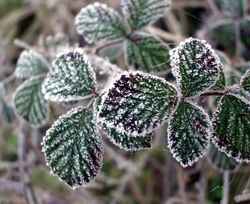 |
|
| |
frosted bramble leaves |
|
Most plants have disappeared to their over wintering form (such
as bulbs, runners and seeds or leafless above-ground branches),
although one or two may be now tentatively poking through again.
The list of winter bird species is very different from the summer
one, as many species have migrated southwards. However geese,
ducks and waders feed frenetically on coasts and wetlands are a
special attraction at this time of year. Fieldfares and
redwings move in flocks through the countryside, whilst many
smaller birds come to garden bird tables to find enough food to
survive.
Trees stand starkly in fields and woodlands in winter with buds
poised to burst when spring at last arrives. They have a
particular beauty in their bare form. Although it is perhaps
more difficult to identify trees without their leaves it is worth
the effort. One way to cheat is to look for fallen leaves
below a tree and see if it is possible to identify it that way.
However if you look carefully many species, particularly oak, ash
and silver birch for instance, have a very specific shape, bark
texture and twig\bud form. Any good tree guide should point
out what features to look out for.
| |
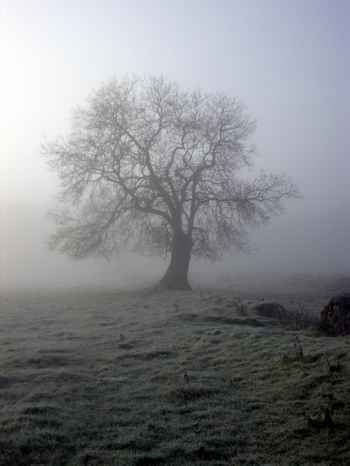 |
|
| |
a winter tree (ash) in the mist |
|
As the month progresses, the song thrush, with its
strident repeated notes, starts to proclaim its territory. On
sunny days blackbirds, greenfinches and great tits
also sing. In woodlands you may be lucky enough to hear a
great spotted woodpecker drumming against a tree.
At certain sites during winter bird flocks gather to roost in
their tens of thousands. This provides a moving spectacle and
quite a din. Starlings for instance flock in wetlands, such as
on the Somerset levels, and cover the reed beds like black,
chattering locusts.
| |
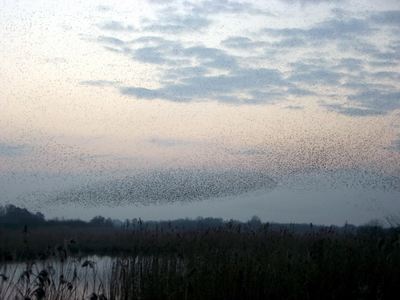 |
|
| |
winter flocking starlings |
|
|
|
| |
Habitats and species
|
|
Parks and gardens: The parks and gardens are largely bare with
only a few hardy bedding plants and perennials showing any colour.
However the first shoots of the spring bulbs are likely to emerge.
In addition it is heartening to see the delicate looking
snowdrops emerging with flowers opening in January onwards. By
now you may have been feeding garden birds and putting out water for
a number of months. If not it is never too late and you can
make a real difference to bird survival. Flocks of wintering
thrushes (red wings and field fares) move around
together in search of berries and other food. At night they
can be heard calling to one another with a distinctive metallic
chack noise or a high pitched whistle. Remember that blue
and great tits will now be scouting around for nest boxes for
Spring, so you need to have them in place as soon as possible.
In winter the seemingly bare parks redirect your focus on the
more common spectacles of nature normally overlooked, such a
spider's web made useless by frost or dew.
| |
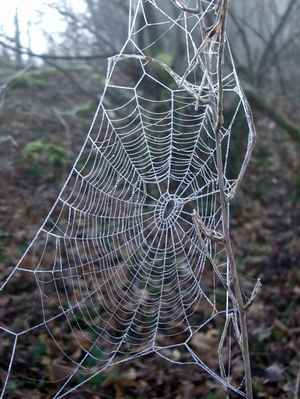 |
|
| |
frosted spider's web |
|
The occasional butterfly can emerge in mild weather such as
small tortoise shell butterfly. Maybe it will return to
its hibernation when the cold returns.
|
Woodlands
(including wood pasture): Woods are quiet, save for the twitters
of occasional flocks of small birds moving through and the
clattering of bare branches in the wind. January can see hard
frosts cover last autumns decaying leaves. However there is a
glimmer of better things to come as cuckoo pint leaves are
starting to emerge in a curled funnel formation and a precocious
lesser celandine may dare to flower.
| |
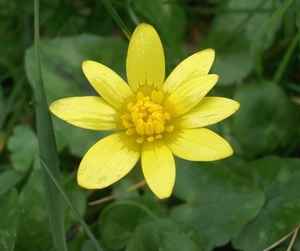 |
|
| |
an early lesser celandine flower |
|
|
Arable and hedgerows: Snow may reveal animal tracks if the
weather is harsh. However warm weather can see some bird
species singing to declare their territory such the skylark,
which sends out is beautiful song as it ascends into the sky.
|
|
Road verges: One of the first wild flowers that appears on
our road sides is the Winter heliotrope.
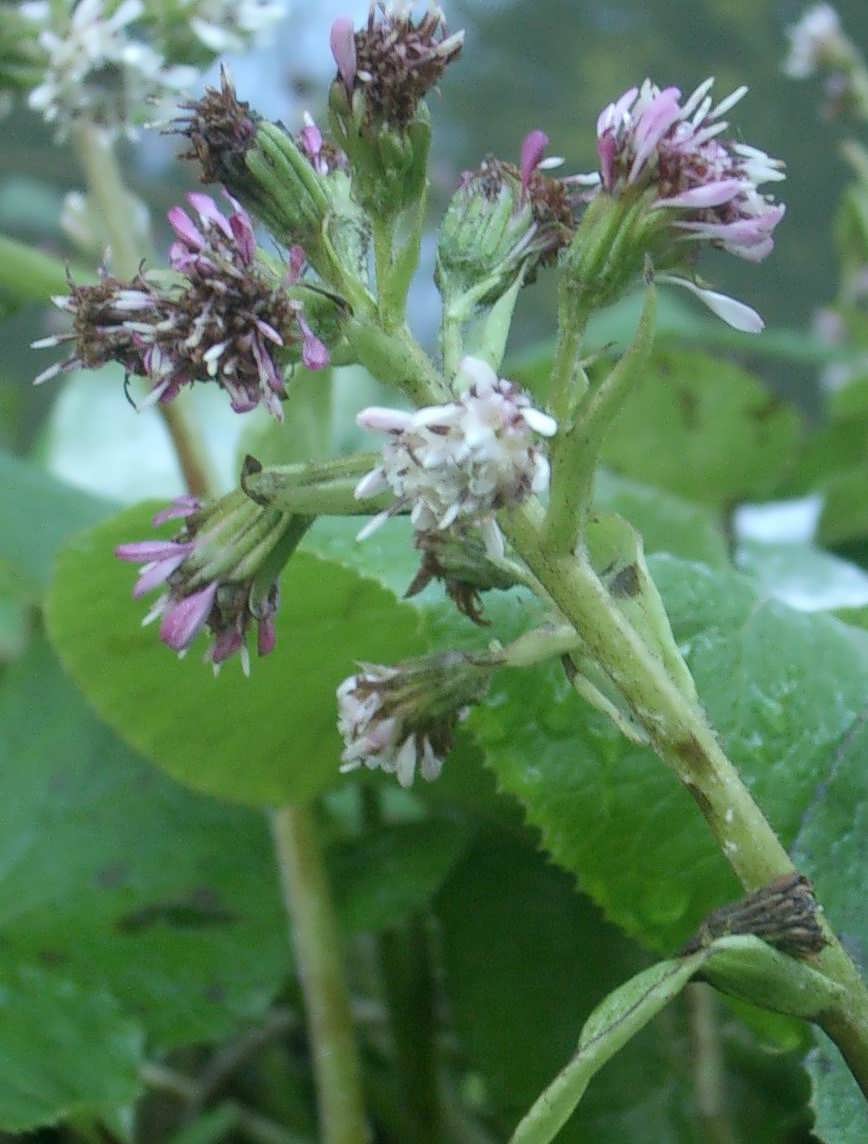
Its round leaves form large clusters with delicate pink and white
flower spikes poking up.
|
Chalk and limestone grasslands:
|
Meadows (neutral) and flood plain grasslands: As winter
progresses flooded grasslands may attract gulls. Where sites
are more permanently flooded, and possibly even managed that way,
ducks (wigeon, gadwall, long-tailed duck,
teal), waders (golden plover, lapwing),
mute swans and even geese may visit.
|
Acidic
grasslands:
|
Heathlands:
|
Mountain and Moorlands (uplands): Uplands are at their harshest.
The mountain hare, the stoat and ptarmigan (a
game bird) are all species which change to a white winter plumage
from their dark summer coats. This provides camouflage from
both the hunter and the hunted!
|
|
Rivers and ponds (including bogs and mires): One or two key bird
species of rivers, such as kingfishers, have moved to the
coast or are over wintering in Africa. However the grey
wagtail can still be found bobbing along the bank and amidst the
froth or a weir. Larger lakes provide feeding and resting
areas for ducks and geese such as bean and white fronted
geese. Winter swans such as Bewick and Hooper
swans return each winter to the same areas, notably those managed by
the Wildfowl and Wetlands Trust e.g. Slimbridge and Welney.
They feed on root vegetables and winter wheat on arable land around
these sites. Coots are abundant on open water and space
themselves out in a way that just permits the minimum of squabbles.
In winter lakes and wetlands take on a particular character with
mists over the water and the chill in the air. Make sure that
while shivering to keep warm, you also take in this austere beauty.
| |
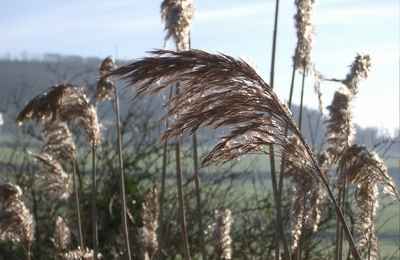 |
|
| |
reeds in winter |
|
|
Sea and the sea shore (including estuaries): This is a fantastic
time to watch over wintering birds such as waders, ducks, geese and
swans. They waders move with the tide to feed on the exposed
mud of the estuaries. Huge flocks of knots can be seen
swooping and darting along the shore.
|
Mammals:
Many species of mammals such as bats, hedgehogs and
badgers are hibernating over winter when their food supply is in
short supply and\or difficult to get to. However should the
weather ease they may venture out and make a sortie. Evidence
of badgers can be found by looking for fresh pad mark or
scratch marks on their well worn paths. Badgers are
creatures of habit and will not let a barbed wire fence stop their
wanderings. It is not uncommon to find stiff hairs caught in
the wire twists showing that a badger has passed that way recently.
|
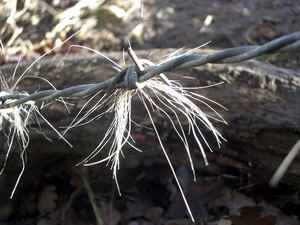 |
|
|
badger hair caught on a barb |
|
Some species such as grey and red squirrels tough
it out, feeding on buds and stashed food supplies. Grey
squirrels (although they are quite silvery in winter
particularly) can even be tamed to come to you to take peanuts.
Love or loath them, they do provide many people with a close up
experience of nature not found any other way. Young children
are particularly fond of them and in many parks it is possible to
hand feed them if you have the patience. You may see them
engaged in a courtship chase during January where the females are
pursued by one or many males vying for her attention and to father
her offspring. They can be very noisy with strange chatterings
and raspings.
|
| Birds:
Along with the birds mentioned here under various habitats above,
one winter delight is the sight of waxwings. Named
after the waxy tips to some of their feathers these beautiful
pinkish birds can be found even in cities. They have a
particular liking for the berry laden trees and bushes of some
supermarket car parks and are certainly worth making a special trip
to hunt out! In Britain the uncommon Cetti's warbler
and the extremely rare and localised Dartford warbler are the
stars of their type as they do not migrate and are scarce enough to
excite. However (perhaps?) increasingly blackcaps and
chiffchaffs can be found in Britain at this time of the year
and their presence is a pleasant reminder of summer. Things are
starting to liven up in the rookery at this time. Rooks
tend to keep close to their nesting area through out the year, but
are now evident around the nests once more. Pairs may be seen
together repairing and rebuilding the nests for the new season
ahead.
|
Amphibians & Reptiles: All species hibernate during winter.
Newts for instance may be unintentionally discovered under
logs and in stone work, but should not be disturbed during
hibernation. However January sees the emergence of some
species with first newts moving towards their breeding ponds.
In the south western counties, were it is on average warmer and that
bit more temperate, the first of the common frog spawn can be
found in ponds now.
|
Insects:
Insects are few and far between. Occasionally in the winter sunshine
swarms of gnats make an appearance, dancing in mid air.
Some butterflies migrate but many over winter as a pupa or adult.
Peacock butterflies are often to be found in sheds and attics
where the temperature is fairly constant and the air is moist.
|
| Plants:
January is really a low point in terms of plant hunting. However
there are some signs of things to come. Precocious
dandelions may flower as may other common wayside plants.
The first of the hazel catkins are stretching out into golden
tassels. Lichens are easily found at all times, and it is worth
venturing into graveyards, for instance, where the air is not too
polluted to discover these fascinating organisms. Lichens are
an association between algal and fungal species, which benefit from
each other in a way that enables them to survive the most adverse of
conditions.
| |
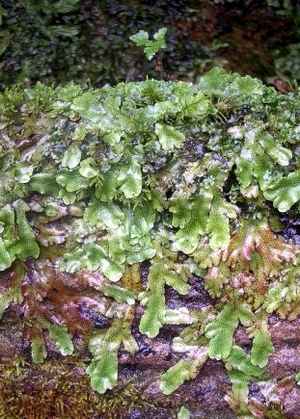 |
|
| |
liverwort (Pellia epiphylla) |
|
Liverworts are always present throughout the year, growing where
there is constant moisture. These relatively simple plants
require high humidity levels to prevent drying out and to enable
them to reproduce.
| |
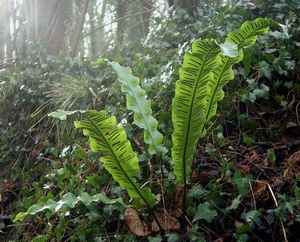 |
|
| |
hart's tongue fern |
|
Ferns too provide a diversion as many can still be seen in
winter. The common hart's tongue fern can be found
growing abundantly in many damp woods and hedges.
|
Fungi:
Even in January some fungi are still bright and fresh. The
slimy orange capped fungus below brings some colour to a winter
woodland.
| |
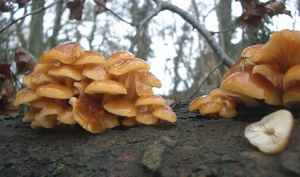 |
|
| |
woodland fungus |
|
|
| |
